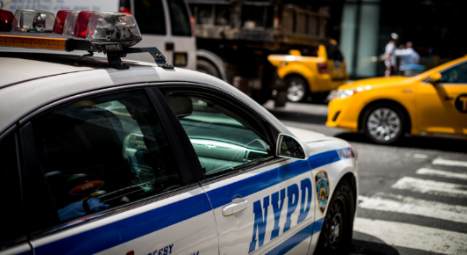
BY SARAH O’CONNELL
A few months since New York Police Department Quality of Life ‘Q-Teams’ began responding to calls across New York City, some residents welcome increased policing, while others question whether it can successfully address societal issues and increase community safety.
While major crime in New York City remains low, with shootings, murders, and subway crimes reaching historic lows in October 2025, many New Yorkers remain concerned about public safety issues, many of which are responded to by Q-Teams.
Some feel that the division will address long-reported issues in the community. “By focusing on these issues, we help improve public safety in this borough block by block and erase the notion that some portions of the city are more important than others,” said Queens District Attorney Melinda Katz in a city press release.
But others aren’t so sure. “Overpolicing never works,” said lifelong North Bronx resident Manny Polanco. “It just continues the cycle.” While Polanco added that many people in his community think increased policing can fix issues such as open drug use, “all it does is throw people who look like you, that sound like you, that grew up around you in jail, just for the fact that they’re trying to get by.” He also said that Black and Brown communities are disproportionately targeted by police in the Bronx, and that he sees increased access to social programs as a way to break the cycle.
The division was first announced in April in a joint press conference by Mayor Eric Adams and police Commissioner Jessica Tisch. According to Tisch, the division would address “issues that New Yorkers see and feel every day,” impacting their sense of safety in the city. In August, it was announced that the division would be expanded across the city. During the pilot period, the department reported responding to over 40,000 calls and reducing non-emergency response times by an average of 50 minutes.
Officers from various community-focused divisions, such as neighborhood coordination, youth coordination, and traffic safety make up the Q-Teams. The officers respond to non-emergency 911 and 311 calls specifically regarding quality of life complaints, such as encampments, abandoned vehicles, and noise complaints.
The Legal Aid Society, a nonprofit providing legal representation for New Yorkers in need, called the division “deeply troubling and dangerous.” It targets vulnerable New Yorkers who are trying to survive amidst a cost of living crisis, and saddles them with an arrest record which can impede access to housing and social services, the organization wrote in a press statement released after the citywide expansion was announced.
Sofia Canonge, resident of Woodside, Queens, reported while she had seen increased policing of minor offenses since the division was implemented, it’s targeted at the wrong subjects. She points to the criminalization of minor issues such as food vending while major crime such as human trafficking occurring on Roosevelt Avenue goes largely unchecked.
Canonge also spoke about the relationship between the targeting of quality of life issues and gentrification. Queens, as well as many other areas of the city has seen an influx of younger white residents, many of them students who can be intolerant of existing community norms. “I’m pretty sure these young people are okay with the Mayor’s administration doing that,” she said. “The Mayor’s administration is, on behalf of them, doing this.”
Stringent enforcement of low level offenses is nothing new to New Yorkers. In 1993 under Mayor Rudy Giuliani and police commissioner Bill Bratton (Tisch’s former mentor), the Broken Windows theory was first applied to the NYPD. The theory proposes that allowing minor signs of disorder to go unchecked will lead to increasing disorder and an eventual eruption of serious crime.
The increased enforcement of quality of life offenses is widely cited by proponents as the factor behind the steep decline in crime in the 1990s. However critics have long disputed this, and in 2016, the NYC Department of Investigations found no direct link between increased quality of life summonses and drop in felony crime. Tisch responded to the findings when announcing the city-wide rollout, saying the division is “not about preventing something worse, It’s about improving daily life.”
